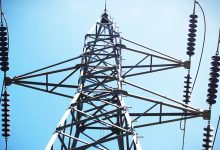The Federal Coalition government is undermining its own executive and industry efforts by refusing to get behind the Australian Energy Market Operator’s Integrated System Plan and refusing to call a COAG Energy Council meeting.
If the Federal Government were to get behind the ISP, there would be less risk of blackouts and electricity prices would fall relative to alternatives. The Federal Government could most explicitly endorse the ISP by providing or facilitating a seed fund as suggested by the Energy Security Board to accelerate transmission investment.
It must be clear that, in the end the Federal Government will either have to back the industry executive that is AEMO/AER/AEMC/ESB or get rid of them. You can’t have a functioning system where the parties are so at cross purposes.
That said, we don’t think its open to the States to form a separate COAG but it is very open to the Victorian and or NSW Government and even the cash starved Queensland Government to put up some seed capital for transmission.
Once the transmission is built it can be sold back to the transmission companies. It seems to me this is a very low risk option for Government to improve energy security for their voters and to lower electricity prices.
In short, Government needs to get behind the ESB and AEMO.
Federal Gov divides, but can it conquer?
Australia’s electricity governance has – since the Hilmer reforms – been a model of cooperative Federalism. As I understand it, and that’s not very well, the National Electricity Law is a piece of South Australian legislation.
In practice for many years, AEMO, the AEMC (Australian Energy Market Commission)and the AER (Australian Energy Regulator) worked together to deliver electricity to consumers big and small.
Overall Governance at the top stemmed from the COAG Energy Council.
Following the Finkel Report governance was changed by creation of the Energy Security Board to sit as the policy implementor for COAG. The ESB essentially sits on top of the AEMC/AER/AEMO. There are no doubt competing views for the role of the ESB but I might argue its job has been in part to carry forward the spirit of the Finkel Report.
The ESB’s work in practice has been to ensure the reliability leg of the NEG is now law. Secondly, the ESB lent its full support to the Integrated System Plan [ISP] of AEMO. As most readers will know, the ISP is essentially a transmission planning super document with an additional focus on the development of renewable energy zones.
The ESB’s main role in the ISP has been to look at ways to speed up transmission development.
The problems with transmission development are:
- 1. The regulatory and construction process has typically taken about 7 years. This is widely regarded, including by the ESB and many large generators, eg Snowy Hydro, as been completely unsatisfactory for an energy system in transition.
- 2. Transmission companies accept low returns because of the revenue certainty that accompanies approved transmission investment. In practice this means they won’t do any “speculative” development.
The ESB has worked on both problems by suggesting and having the AEMC make rules that can cut about a year out the regulatory tests.
In regard to investment, the ESB proposed before Xmas going to COAG Energy Council to seek approval or find a mechanism to get a fund started to build transmission on the assumption it will eventually get regulatory approval.
Conceptually this could cut 2-3 years from transmission build. 2-3 years.
But this is where the Federal Government white-anting comes in.
Federal Government refuses to call COAG meeting
We say Federal Government because – even though the policy of antagonism towards COAG, towards the ESB, towards AEMO is ostensibly that of energy minister Angus Taylor – it’s hard to believe that such a deliberate white-anting of long-established established well accepted cooperative federalism would be allowed without the implicit approval of the Prime Minister.
The Energy Minister has never, to my knowledge made public comments about the ESB’s work, about the ISP or indeed any of the work being done by the governance bodies.
Federal Government tries to negotiate individual State deals
Rather than go through COAG, where the Federal Government would be outnumbered by both ALP States and to an extent by South Australia and NSW, the Federal Government’s policy is to white ant the work of the industry governance bodies by trying to strike deals with individual States.
The first of these – an inquiry into the closure of Liddell – is “shadowy” because no details have been released about who is involved.
The difficulty this faces is that Mat Kean, the NSW Energy Minister, is on record as saying he supports the NEG and by implication COAG.
In addition, there is already a separate NSW Lower House enquiry into NSW electricity industry to accompany last year’s Upper House enquiry.
Kean will no doubt face opposition within the NSW Government, which like every other conservative Government has a hard right wing and a moderate group. As Berijiklian won the election and appointed Kean, the conservatives are a little bit back in the box. But they won’t be contained if anything serious is proposed.
NSW Govt could prefund NSW transmission investment
As boring as it is, when ITK makes a submission to the NSW enquiry we will suggest that the NSW Government pre-fund transmission in NSW with a commitment to sell the resulting asset back to Transgrid once regulatory processes have been completed.
As Transgrid described in a recent Energy Insiders Podcast, this could include a large transmission upgrade to Queensland, and the proposed Snowy 2.0 needs to get to the NSW market.
It’s hard to see the downside in this transmission investment.
Equally, the Victorian Government could do the same for the Snowy Victoria link. As Snowy Hydro’s Gordon Wymer pointed out in another Energy Insiders podcast, there may have been no energy shedding last summer if more transmission was available.
Will the States bypass the Federal Government?
It’s on public record that the Queensland Energy Minister has sought legal advice about the States forming their own policy with the Federal Government. The NSW Govt has alluded to similar discussions.
The difficulty, and your author is just a financial analyst, is that bypassing COAG means bypassing the ESB etc.
In the end Mr Taylor’s parallel universe approach where all the existing governance, understanding and work is just ignored in favour of Taylor’s design will at a minimum disrupt the energy transition, and may lead to avoidable blackouts over the next few years.
Over time, however, we expect that somehow or other the “system” will reassert its authority. The immediate opportunity is for a State Govt either NSW or Victoria to prefund some transmission.










